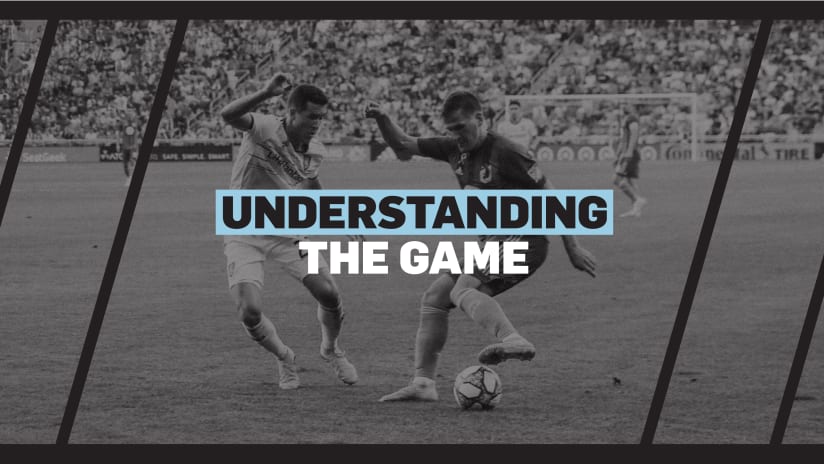Since we’ve got a bit of time on our hands, we thought it would be a good time to relax, have a little fun and stretch out a bit with some posts beyond the usual recaps, preview and interviews. Here we’ve got a some broad background on the rules of the game, how team’s line up on the field and how they try to push and pull the opposing team around.
Let’s get a couple technicalities out of the way up top. The game consists of 90 minutes of regulation play divided up into two 45 minutes halves in which the clock runs continuously. The officials keep track of any time lost for injuries, the ball going out of bounds, resets after goals, etc. and that time is added to the end of each half for stoppage time. In regular season MLS play, the winner of the game receives three points while the loser receives zero points. If the game is tied at the end of regulation, each team takes one point.
As with most sports, the texture of the sport is defined by how players and teams carve up and use space on the field. In soccer, this is defined foundationally by formation and at the edges by the offside rule.
Formations are broken up by position, with numbers representing defenders, midfielders and forwards (as in 4-3-3) or defenders, midfielders, attacking midfielders and forwards (Minnesota United’s favored 4-2-3-1). Once the whistle blows for kickoff, you’ll be able to see these lines on the field for each team, and how they move together or break and shift depending on which team has the ball. Teams in possession will often either try to strike quickly and directly or build up possession by bringing defenders into the attack.
When possession is lost, teams usually fall back into lines to defend. The attacking team will then look to find or create space between the lines by forcing the other team to send multiple defenders stop the ball. This push-pull is what really gives the game its energy as attackers try to bait defenders into overcommitting or work to create mismatches before striking. On the flip side, defenders often have a plan of where on the field they want to force the issue and will hang back, inviting attackers into channels where they can pounce.
The most confusing element of the game for new fans is the offside rule, but it’s in fact essential to the game’s character. Here’s how FIFA — the governing body of soccer worldwide — explains it:
- A player is offside when the player is nearer to the opponents’ goal line than both the ball and the second-to-last opponent.
- A violation will occur when a player is in an offside position (previous bullet point) at the same time the ball is being passed forward to them.
A couple things here. Basically this means an attacking player cannot have the ball played to them when there is no defending player in front of or even with them except for the goalkeeper (usually the last opponent). It’s important to note that it is not illegal to be in such a position, but it is illegal if the ball is played to a player in that position. There are some wrinkles and exceptions — you can’t be offside in your own half, you can’t be offside off of a throw-in — but that’s the essential rule.
So that’s the letter of the law, but the important thing is that this is the fundamental limitation that opens up creativity in the game. Without it, forwards could camp out in the opposing team’s penalty box (the 18 yards extending from the center of the goal) and wait to cherrypick goals. Instead, attackers have to lull defenders into a sense of security or thread the needle down the offside line before exploding forward. Defenders can step up in unison to force attackers into a violation in an offside trap. In soccer, as in life, limitations breed creativity.





